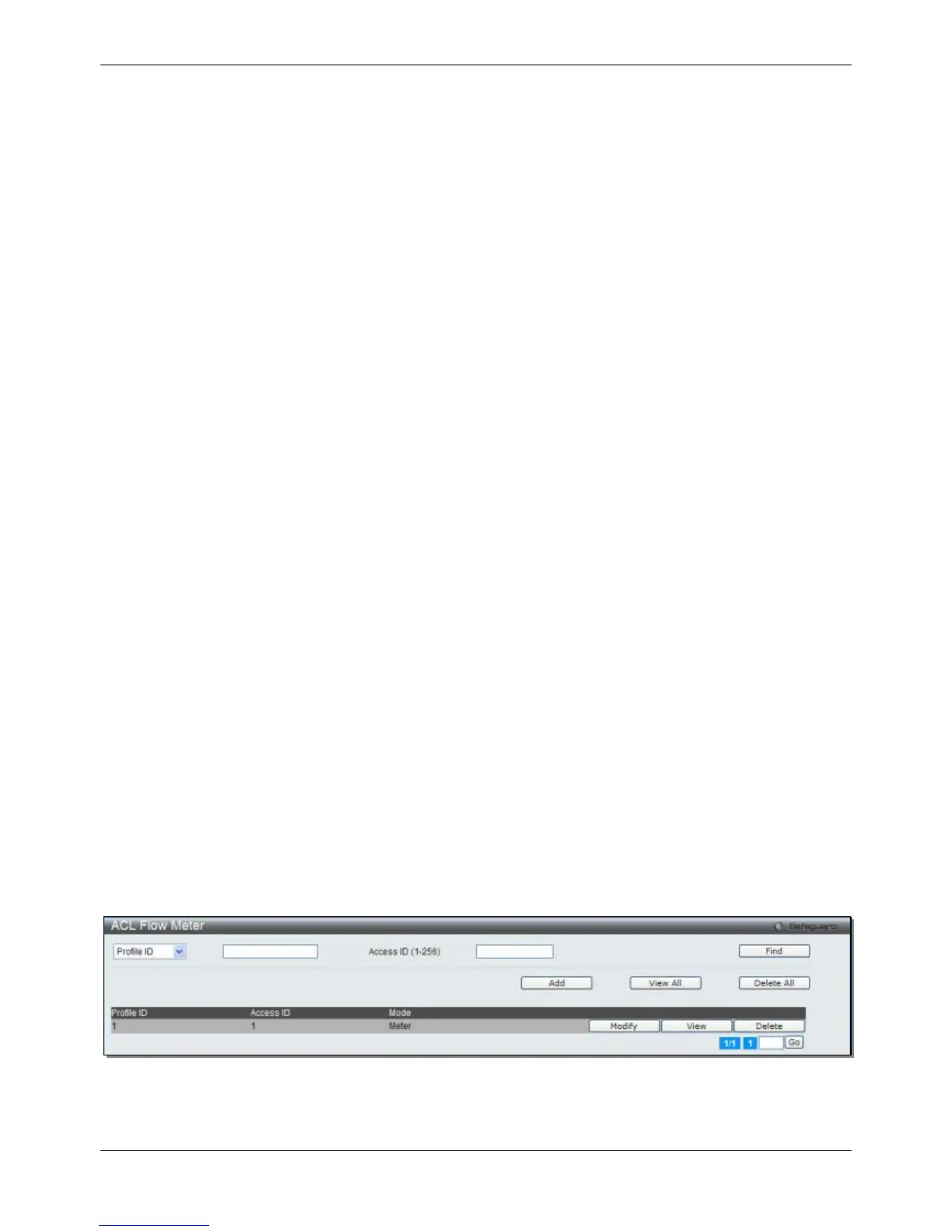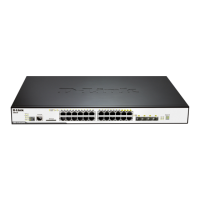xStack® DGS-3120 Series Layer 3 Managed Gigabit Ethernet Switch Web UI Reference Guide
302
specific headers. For the trTCM, the packet flow is marked green if it doesn’t exceed the CIR and yellow if
it does. The configured rate of the CIR must not exceed that of the PIR. The CIR can also be configured for
unexpected packet bursts using the CBS and PBS fields.
• CBS – Committed Burst Size. Measured in bytes, the CBS is associated with the CIR and is used to
identify packets that exceed the normal boundaries of packet size. The CBS should be configured to
accept the biggest IP packet that is expected in the IP flow.
• PIR – Peak Information Rate. This rate is measured in bytes of IP packets. IP packet bytes are measured
by taking the size of the IP header but not the link specific headers. If the packet flow exceeds the PIR, that
packet flow is marked red. The PIR must be configured to be equal or more than that of the CIR.
• PBS – Peak Burst Size. Measured in bytes, the PBS is associated with the PIR and is used to identify
packets that exceed the normal boundaries of packet size. The PBS should be configured to accept the
biggest IP packet that is expected in the IP flow.
• srTCM – Single Rate Three Color Marker. This, along with the trTCM, are two methods available on the
switch for metering and marking packet flow. The srTCM marks its IP packet flow based on the configured
CBS and EBS. A packet flow that does not reach the CBS is marked green, if it exceeds the CBS but not
the EBS its marked yellow, and if it exceeds the EBS its marked red.
• CBS – Committed Burst Size. Measured in bytes, the CBS is associated with the CIR and is used to
identify packets that exceed the normal boundaries of packet size. The CBS should be configured to
accept the biggest IP packet that is expected in the IP flow.
• EBS – Excess Burst Size. Measured in bytes, the EBS is associated with the CIR and is used to identify
packets that exceed the boundaries of the CBS packet size. The EBS is to be configured for an equal or
larger rate than the CBS.
• DSCP – Differentiated Services Code Point. The part of the packet header where the color will be added.
Users may change the DSCP field of incoming packets.
The ACL Flow Meter function will allow users to color code IP packet flows based on the rate of incoming packets.
Users have two types of Flow metering to choose from, trTCM and srTCM, as explained previously. When a packet
flow is placed in a color code, the user can choose what to do with packets that have exceeded that color-coded
rate.
Chapter 1 Green – When an IP flow is in the green mode, its configurable parameters can be set in the
Conform field, where the packets can have their DSCP field changed. This is an acceptable flow rate for the ACL
Flow Meter function.
Chapter 2 Yellow – When an IP flow is in the yellow mode, its configurable parameters can be set in the
Exceed field. Users may choose to either Permit or Drop exceeded packets. Users may also choose to change the
DSCP field of the packets.
Chapter 3 Red – When an IP flow is in the red mode, its configurable parameters can be set in the Violate
field. Users may choose to either Permit or Drop exceeded packets. Users may also choose to change the DSCP
field of the packets.
Users may also choose to count exceeded packets by clicking the Counter check box. If the counter is enabled, the
counter setting in the access profile will be disabled. Users may only enable two counters for one flow meter at any
given time.
To view this window, click ACL > ACL Flow Meter, as shown below:
Figure 7-45 ACL Flow Meter
The fields that can be configured are described below:

